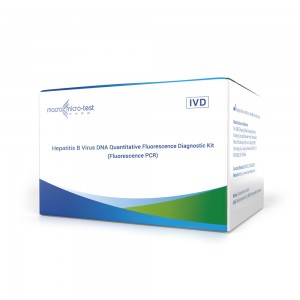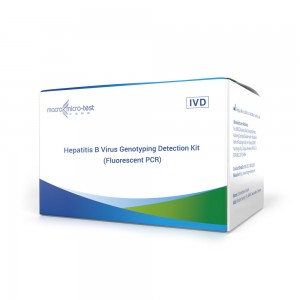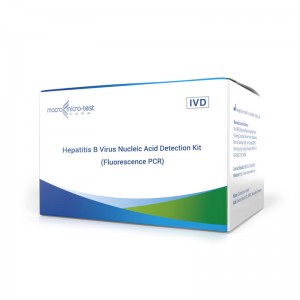Hepatitis B Virus DNA Quantitative Fluorescence
Product name
HWTS-HP015 Hepatitis B Virus DNA Quantitative Fluorescence Diagnostic Kit (Fluorescence PCR)
Epidemiology
Hepatitis B is a disease caused by hepatitis B virus (HBV), mainly characterized by liver inflammatory lesions, and can cause multiple organ damage. Hepatitis B patients are clinically manifested as fatigue, loss of appetite, lower extremity or general edema, and hepatomegaly due to impaired liver function. Five per cent of adult infected persons and 95% of vertically infected persons cannot effectively clear HBV, resulting in persistent virus infection, and some chronic infections eventually develop into liver cirrhosis and hepatocellular carcinoma[1-4].
Channel
| FAM | HBV-DNA |
| ROX |
Internal Control |
Technical Parameters
| Storage |
≤-18℃ |
| Shelf-life | 12 months |
| Specimen Type | fresh serum、Plasma |
| Tt | ≤42 |
| CV | ≤5.0% |
| LoD | 5 IU/mL |
| Specificity | The specificity results show that all 50 cases of healthy HBV DNA negative serum samples are negative; the cross-reactivity test results show that there is no cross-reaction between this kit and other viruses (HAV, HCV, DFV, HIV) for nucleic acid detection with blood samples, and human genomes. |
| Applicable Instruments | Applied Biosystems 7500 Real-Time PCR System
Applied Biosystems 7500 Fast Real-Time PCR Systems QuantStudio®5 Real-Time PCR Systems SLAN-96P Real-Time PCR Systems(Hongshi Medical Technology Co., Ltd.) LightCycler®480 Real-Time PCR system LineGene 9600 Plus Real-Time PCR Detection System (FQD-96A, Hangzhou Bioer technology) MA-6000 Real-Time Quantitative Thermal Cycler (Suzhou Molarray Co., Ltd.) BioRad CFX96 Real-Time PCR System BioRad CFX Opus 96 Real-Time PCR System |
Work Flow
Recommended extraction reagent: Macro & Micro-Test Virus DNA/RNA Kit (HWTS-3017) (which can be used with Macro & Micro-Test Automatic Nucleic Acid Extractor (HWTS-EQ011)) by Jiangsu Macro & Micro-Test Med-Tech Co., Ltd.. The extraction should be carried out according to the instruction manual, the extracted sample volume is 300μL, and the recommended elution volume is 70μL.





